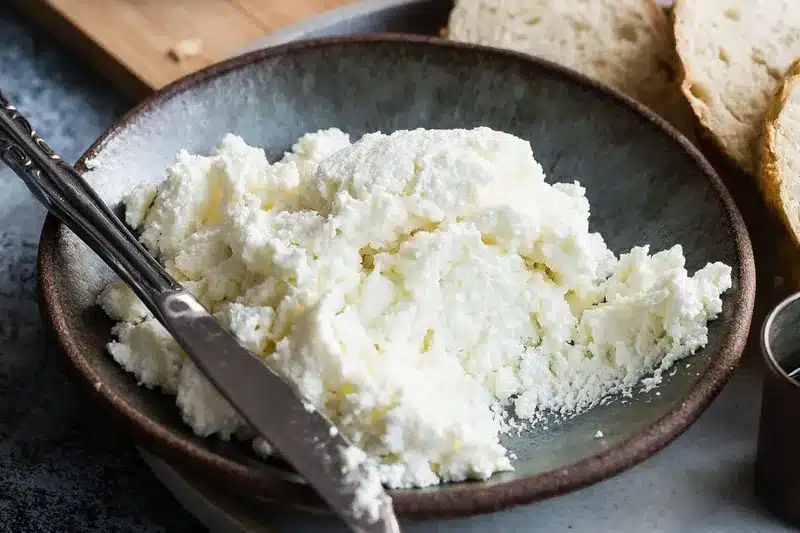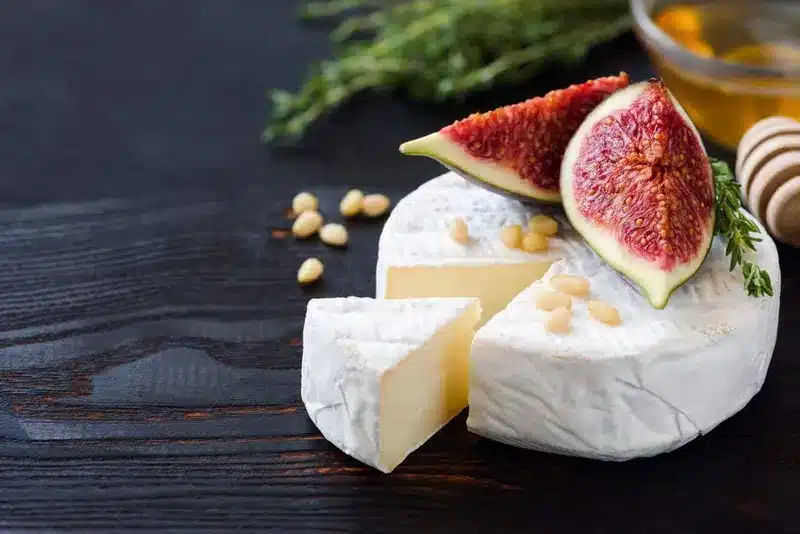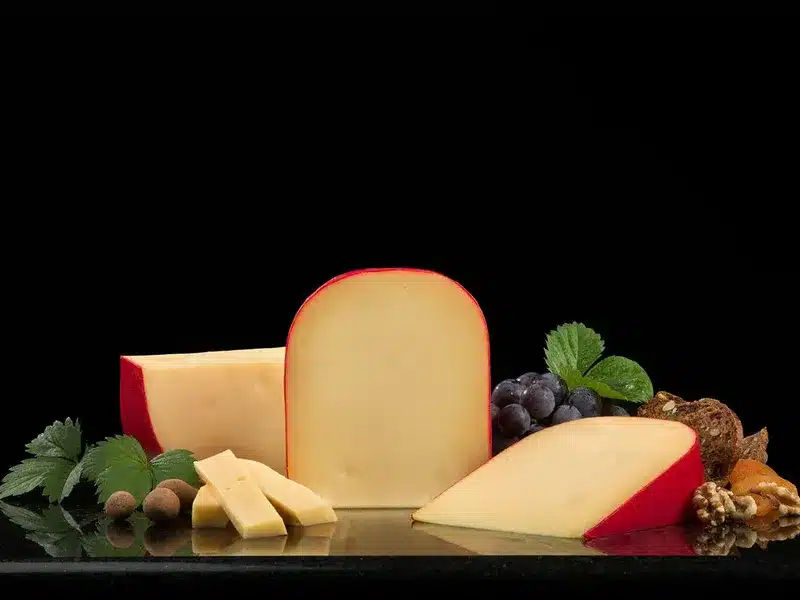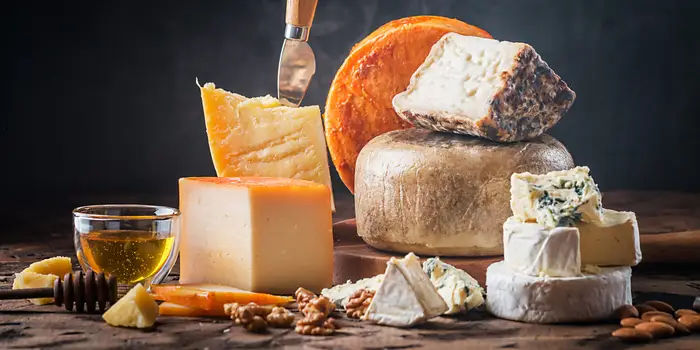Cheese is awesome! There are so many types of cheese out there, each with their own unique taste and texture. Let’s check out some of my favorites.
Cheddar reigns supreme! As it ages, this cheese develops a crumbly texture and sharp flavor, perfectly pairing with meats and fruits, then you got your softies, like brie and mozzarella. Brie is so creamy and buttery – it’s the perfect fancy cheese to put on crackers. And what would pizza be without stretchy mozzarella to get those awesome melted strings with each bite?
Don’t miss blue cheeses! Tangy veins explode with flavor (burgers, wings!).
Then, explore parmesan: crumbles perfectly, nutty-salty flavor intensifies with age.
Table of Contents
- What Are the Different Types of Cheese?
- Fun Cheese Facts
- FAQ
- What is the meaning of these ounces?
- Is cheese good for your health?
- Can I eat cheese every day?
- How much cheese for the day?
- What should I eat with cheese?
- Is it hard to digest cheese?
- Is cheese good for the heart?
- How is cheese made from milk?
- What is the world’s most expensive cheese?
- Why is it called cheese?
What Are the Different Types of Cheese?
Gone are the days of settling for the ordinary. Today, let’s explore the types of cheese! It offers a vibrant explosion of flavors and textures. Furthermore, let’s embark on an adventure through the essential varieties that make up this rich landscape.
1. Fresh & Fantastic

Fresh cheeses are a delightful introduction to the world of cheese, known for their mild flavor profiles and creamy textures. Moreover, Here are two classics:
- Mozzarella: Renowned for its stretchy texture and subtle taste, mozzarella is a beloved staple in Italian cuisine, perfect for pizzas and salads.
- Ricotta: With its creamy consistency and hint of sweetness, ricotta adds depth to both savory and sweet dishes, from lasagna to cannoli.
2. Soft and Spoonable

Soft cheeses offer a luxurious experience with their creamy textures and delicate flavors. Let’s explore two popular varieties:
- Brie: Originating from France, brie enchants with its velvety interior and edible white rind. Pair it especially with fruits, nuts, or crusty bread for a decadent treat.
- Camembert: Similar to brie, camembert boasts a rich and earthy flavor profile. Whether served on a cheese board or baked as an appetizer, it never fails to impress.
3. Semi-Soft & Satisfying

Semi-soft cheeses strike the perfect balance between pliability and firmness, offering a satisfying bite. So, Here are two favorites:
- Gouda: Hailing from the Netherlands, gouda delights with its buttery texture and hints of caramel sweetness. Thus, enjoy it sliced on sandwiches or melted in soups.
- Havarti: A Danish classic, havarti charms with its creamy texture and mild, buttery flavor. Melt it onto grilled cheese sandwiches for a comforting indulgence.
4. Hard as Nails (But Delicious)

Hard cheeses are aged to perfection, boasting robust flavors and a firm texture that crumbles with each bite. Let’s savor two iconic selections:
- Cheddar is a versatile cheese with a sharp, tangy taste and smooth texture. Whether snacked on, melted, or grated over dishes, cheddar adds a burst of flavor to any meal.
- Parmesan: Revered as the “king of cheeses,” parmesan captivates with its nutty, savoury profile and granular texture. So, sprinkle it generously over pasta dishes or salads for an irresistible finish.
5. Blue with a Twist
You can characterize Blue cheeses by their distinctive veins, which infuse them with bold flavors and a hint of intrigue. Let’s explore two standout options:

- Gorgonzola is a beloved Italian blue cheese with a creamy texture and tangy flavor. Therefore, crumble it over salads or pair it with fruits for a delightful contrast of tastes.
- Roquefort: Hailing from France, roquefort offers a complex flavor profile with notes of sweetness and tanginess. It’s a perfect addition to cheese plates or sauces, adding depth to any dish.
Fun Cheese Facts
Before we conclude our cheesy adventure, here are some fun facts to savor:
- The world’s oldest piece of cheese, discovered in Egypt, is estimated to be over 3,000 years old!
- With over 2,000 different types of cheese worldwide, there’s always something new to discover.
- The French hold the title for the highest cheese consumption per capita, averaging over 24 kg per person each year!
- Beyond its delicious taste, cheese is a valuable source of calcium, protein, and healthy fats, making it a nutritious addition to any diet.
Let’s wrap up our exploration of the world of cheese. Each types of cheese offers a unique culinary experience, to be savoured and celebrated. So, go ahead—indulge in the diversity of cheese and let your taste buds lead the way!
FAQ
What is the meaning of these ounces?
Specifically: One ounce is equivalent to 28 grams.
Approximately: An ounce is approximately 28-30 grams.
For reference: A good way to visualize an ounce is to imagine it being roughly the size of two dice or your thumb.
So when dietary guidelines recommend limiting cheese to 1-2 ounces per day, it means:
1 ounce of cheese is about 28 grams, or a 1-inch cube.
2 ounces of cheese would be around 56 grams, or a 2-inch cube.
Is cheese good for your health?
Cheese can be part of a healthy diet in moderation, as it provides protein, calcium, and other nutrients. However, Maintain Limited intake as cheese is high in saturated fat and sodium.
Can I eat cheese every day?
It is generally recommended to limit cheese to 1-2 ounces per day as part of a balanced diet. Consuming too much can lead to excess saturated fat and sodium.
How much cheese for the day?
Health experts recommend limiting cheese to around 1-2 ounces per day as part of a healthy diet, because this provides nutritional benefits without excess saturated fat or sodium.
What should I eat with cheese?
Cheese goes well with crackers, apples, pears, grapes, cured meats, wine, bread, tomatoes, basil, olive oil, nuts, and especially avocados.
Is it hard to digest cheese?
Some people find cheese hard to digest due to lactose intolerance or sensitivity to casein. Aged, hard cheeses are easier to digest than soft, fresh cheeses for most.
Is cheese good for the heart?
Recent research found cheese consumption does not significantly impact heart disease risk and may even protect against stroke. But moderation is still key.
How is cheese made from milk?
Cheese is made from milk by separating the curds (solids) from the whey (liquids). Then, the curds are salted, pressed, and aged to make many different cheese varieties.
What is the world’s most expensive cheese?
The world’s most expensive cheese is “Pule”. A rare Serbian cheese made from the milk of Balkan donkeys, hence Pule cheese can cost up to $600 per pound, making it the most expensive cheese in the world.
Why is it called cheese?
The name “cheese” comes from the Latin word “caseus,” which means curdled or fermented milk. Cheese is made by curdling milk. Then separating the solids (curds) from the liquids (whey). So the name refers to the essential process of curdling milk to produce cheese.







